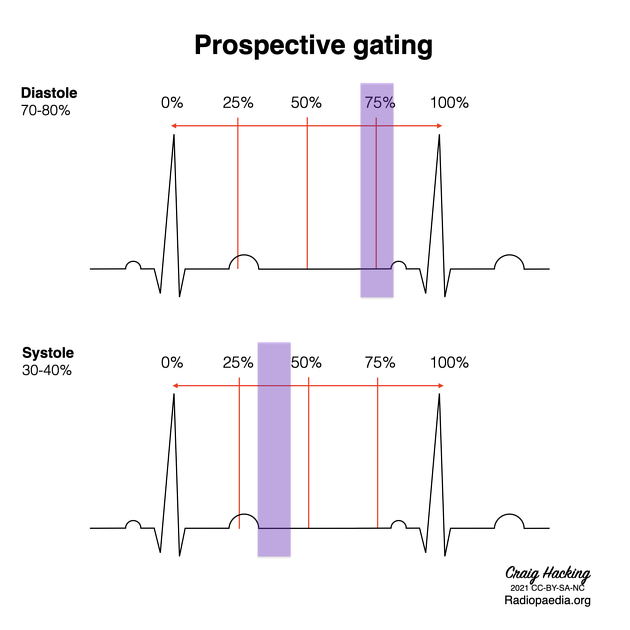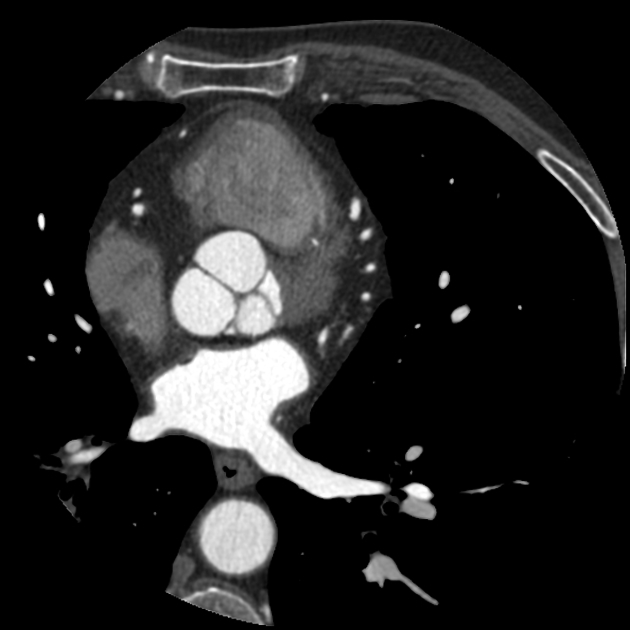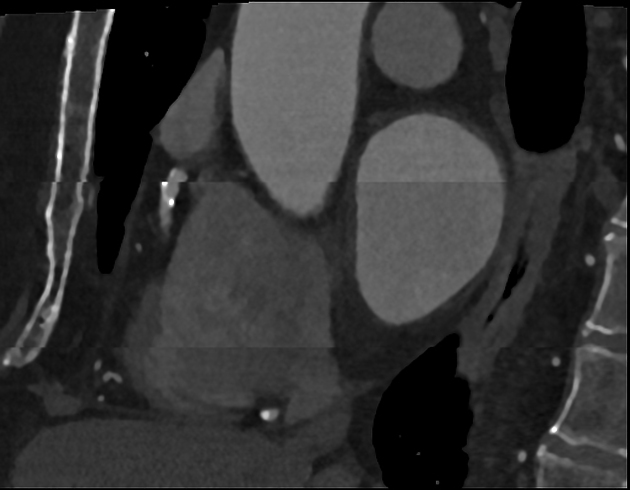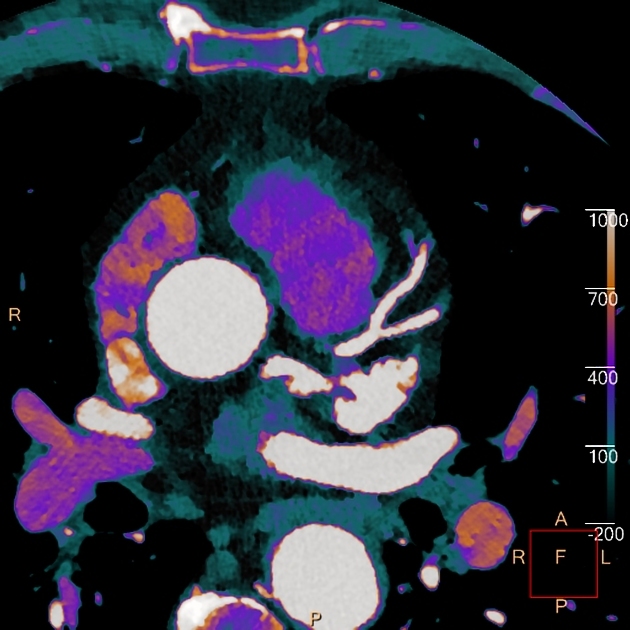A prospective ECG-gated cardiac CT angiogram, also known as the step and shoot method, is considered the default or ‘bread and butter’ protocol for coronary CTA and combines a reasonably low radiation dose with diagnostic results in most situations. Nowadays, this protocol is available on most CT scanners with cardiac CT capability.
Indications
Please refer to our coronary CT angiography article for general indications.
Purpose
The main purpose is a diagnostic acquisition of a coronary angiogram with minimal cardiac motion. This exam is also utilised in patients with regular heart rates of ≥60 bpm and is quite reliable in terms of diagnostic quality. However, it does not give any information regarding cardiac functionality in the same way as a retrospective scan (that images phases of the heart).
The 'step and shoot' name comes from the technique, images are obtained in a sequential or strict axial manner during a pre-defined phase of the cardiac cycle (R-R interval) without table movement at the time of data acquisition. After one set of images has been obtained the scanner moves to the next imaging position for further data acquisition 2,3. Newer scanner types with broad detectors can cover the heart within 1-4 heartbeats.
A prospective ECG-gated cardiac CT angiogram requires a regular sinus rhythm and is less favourable in very high heart rates.
For patients with atrial fibrillation/arrhythmia that do not meet these criteria see:
For patients <100kgs, stable sinus rhythm and a heart rate <60 bpm consider:
Practical points
-
for higher heart rates (>70bpm) consider widening the acquisition window (padding) 1:
heart rate <65 bpm: 65-75%
heart rate 65-72 bpm: 60-80%
heart rate >72 bpm: 35-80%
-
each artery will suffer from motion artifact at different phases, the following intervals are the best ‘windows’ to prevent movement for different arteries
right coronary artery: 40% of R-R interval
left anterior descending: 60-70% of R-R interval
left circumflex artery: 50-60% of R-R interval
this scan can reduce helical blurring in coronary arteries, calcifications and coronary stent versus helical acquisitions








 Unable to process the form. Check for errors and try again.
Unable to process the form. Check for errors and try again.